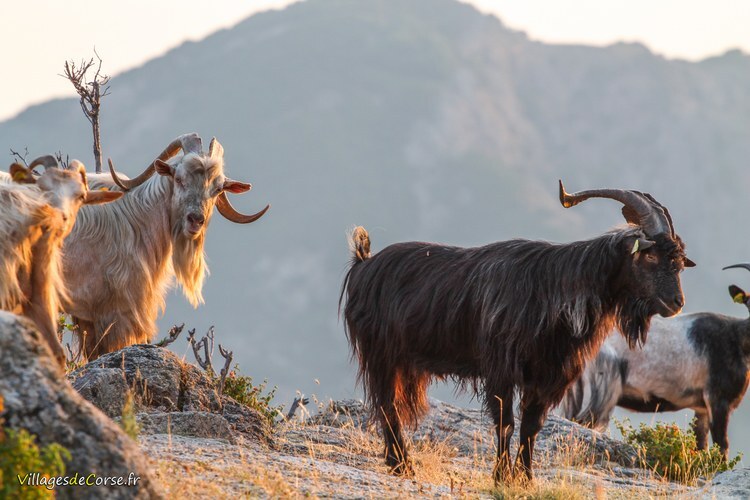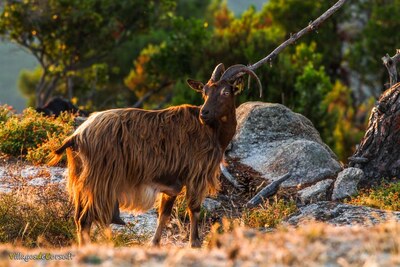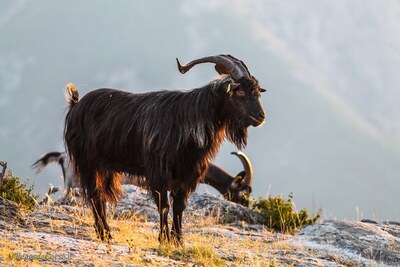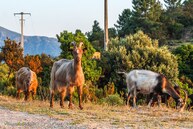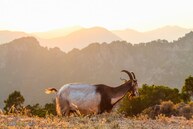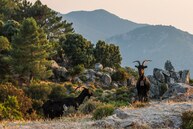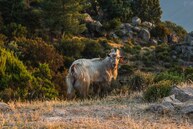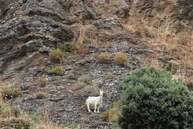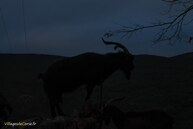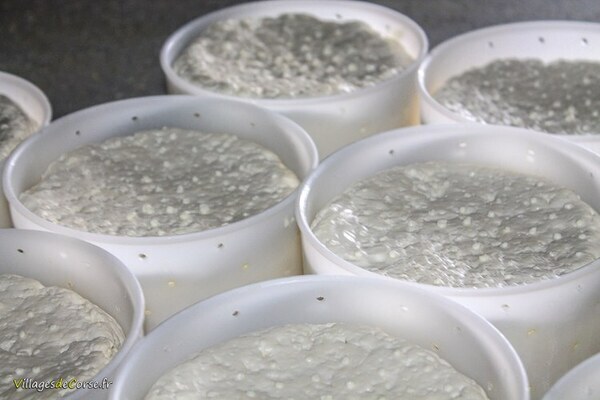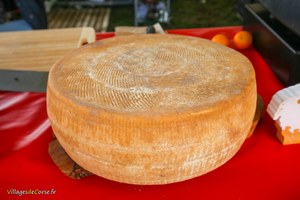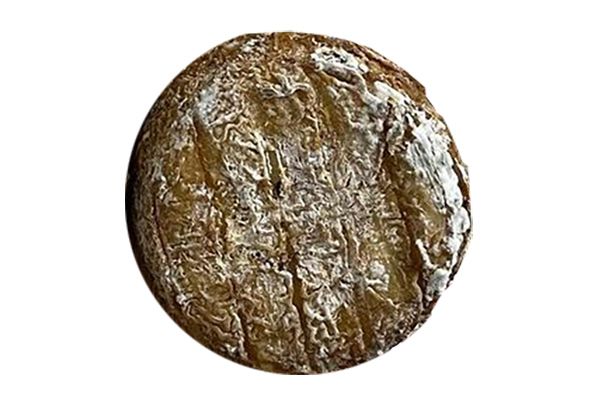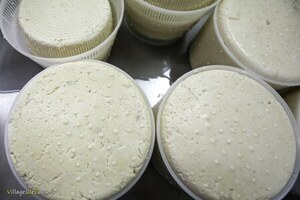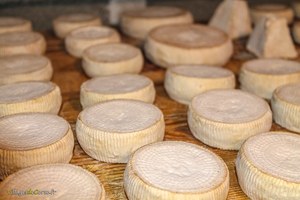- Activities
- Gastronomy
- Cheese factory
- Corsican goat
Corsican goat
The origins of the Corsican goat - Capra Corsa
The recent recognition of the Corsican goat breed was established by an organization affiliated to the French Ministry of Agriculture (CNAG) on Tuesday June 10, 2003. This collective lists cattle, sheep and goat breeds on its France génétique élevage website.
Some sources report finds of goat bones dating back at least 8,000 years. It is likely that the island's first inhabitants introduced the goat to Corsica (originally from the Mediterranean region), with the breed subsequently evolving to suit the island's environment.
Further excavations have identified goat bones dating back to the Middle Ages, and comparative genetic studies have shown that the genome of the Corsican goat has changed very little over the last few centuries. This means, in other words, that the Corsican goat has been able to preserve all its genetic heritage forged over time, protected by its insularity from cross-breeding, giving it greater resistance to certain diseases, for example.
Numbers past and present
As in all regions of France, the number of shepherds, and therefore of livestock, has fallen sharply in the space of a century. At the end of the 19th century, Corsica had around 200,000 goats. Today, the number is estimated at around 30,000 head for just under 400 breeders.
Characteristics of the Corsican goat
There's no standard for the Corsican goat's coat, but it's generally long enough to keep it warm through the winter. The coat can take on various colors, and within the same herd there are white, black and red goats, when they are not spotted with all these colors at once.
Like many other island species, Corsican goats are smaller than their mainland counterparts. Combined with its agility, its size is an asset when climbing rocky slopes. Its limbs are particularly muscular and its feet are supported by sturdy hooves, making it well-suited to life in the mountains. Physical characteristics shaped by millennia.
Lifespan of the goat
Goats, like billy goats, have an average life expectancy of 14-15 years. From the age of 10, they're old enough, but can also live to 18-20.
Corsican goat production
Milked just under two-thirds of the year, Corsican goats produce an average of 175 liters of milk (around 180 kg), or around 85 cl per milking day.
Characteristics of the Corsican goat
Corsican goats are rambunctious and independent by nature. The absence of predators (wolves, bears) gives them total freedom to roam the maquis and mountains, making them, like their cousin the mouflon, excellent surveyors.
The Cabri
Goats and billy goats mate in late spring, around May. The gestation period for a goat is just under 5 months (around 150 days). Around October, the kids are born, enabling lactation. The first two months are devoted exclusively to weaning, while the 3rd month is a transitional period between maternal milk and pasture, marking the start of a new year of milk production.
Christmas Cabri
Every year, goats give birth in autumn and have one or two kids per litter (rarely more), multiplying the herd by 2 or 3. To avoid over-proliferation, which would cause health problems and expose the whole herd to disease, shepherds sell the kids for meat, keeping enough to renew the herd when some goats get too old, or to get new billy goats for breeding.
Like turkey or capon in other regions, it's traditional in Corsica to reserve a goat for Christmas dinner. Many goat breeders respond to the demand from families who reserve their Christmas goat (2-3 months old at the time) in December, or for Easter.
Note that the term chevreau (kid) is not widely used in Corsica, probably because the term cabri (goat) is more faithful to its Latin etymology.
And the Corsican billy goat?
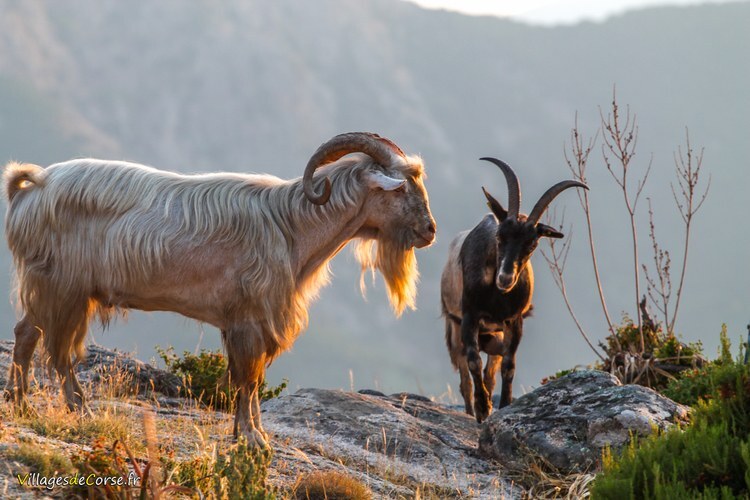
Whether we're talking about sheep, goats or cattle, the female of these mammals often overshadows the male, whose quality is often reduced to his reproductive role. The same is true of goats and billy goats, the latter already suffering from a tarnished image due to their smell. And yet, without the billy goat, there would be no milk or cheese, because as with all mammals, it's only after giving birth that the goat's lactation kicks in, reminding us if need be that it's above all a physiological mechanism to feed the goats.
How many goats for 1 billy goat?
The number of billy goats on a breeding farm can generally be counted on the fingers of one hand. To ensure that all the goats in the herd give birth to milk, you need one billy-goat for every 25 to 30 goats. For example, a normal herd of 130 goats will have around 5 billy goats.
The smell of billy goats
You don't have to live in the countryside to know that billy goats give off a strong odor, the subject of many expressions. Yet the scent of the billy goat sets the pace for goat reproduction, attracting goats and triggering a whole hormonal system. According to a 2014 study by Japanese researchers, the goat's ovarian cycle is triggered only by the presence of this body odor emanating from the billy goat's fleece.
How can you tell a billy goat from a billy goat?
| Goat | Goat | |
|---|---|---|
| Height at withers | 65cm | 75cm |
| Weight | 35 to 45kg | 45 to 60kg |
The surest way to tell a billy goat from a he-goat, especially when they're young, is to observe the goat's genitalia and pendulous udders.
Other physical criteria are more subjective, such as size: the billy goat is about 10 cm taller at the withers (junction between neck and back). Its horns curl like a spiral as it ages, whereas the goat's horns are only curved. The billy goat also has a long goatee, which has inspired men to cut their beards in certain sizes - the aptly named "barbichettes" - and to "wear the billy goat".
